One week ago a severe storm hit the Baltic. This storm also came with a severe flooding. There were warnings but as it turned out, the effects of the storm were much worse than expected and surprised in their destructiveness even the most pessimistic forecasts. The whole last week our magazines, newspapers and regional TV-shows are full of reports, showing the damage, the chaos and the destruction in the aftermath of this storm. Yesterday I visited one of the sites hit the hardest – and even if much work had already been done to clean up the scene, I was utterly shocked.
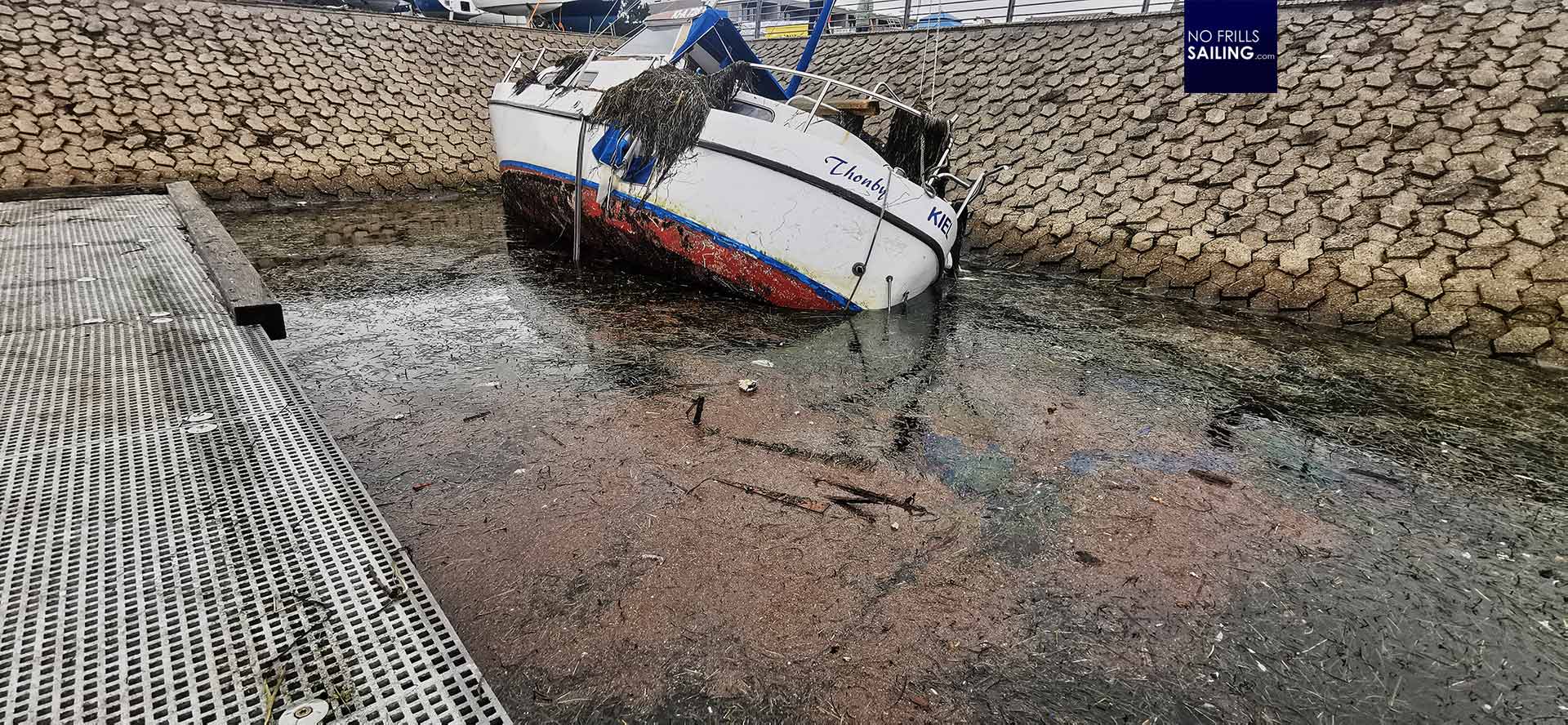
The first thing I saw upon entering the Schilksee Olympic Marina, one of the main marinas of the Kiel Inlet, is a capsized, half-sunk sailboat, sitting on the stones of the harbor´s basin. The boat is heavy beaten, deep scratches, broken portholes and dismasted. She must have been traveled over the pontoons, driven by heaviest of wind force, put on the stones and smashed to death: A total write-off for sure. I raise my view, look into the vast basin, and it´s a chaotic scene I´ve never witnessed before.
A scene of total destruction
I´ve been to Schilksee many times before, last with a catamaran. The marina belongs to the Kiel Olympic base, many pleasure sailors have their berths here, but also many performance sailing skippers with their boats, for example Martin Menzner and his J80 “PIKE”) and sailing clubs. It is situated on the Western side of Kiel Bay area, a popular stop-over before entering or after traversing the Kiel Canal.
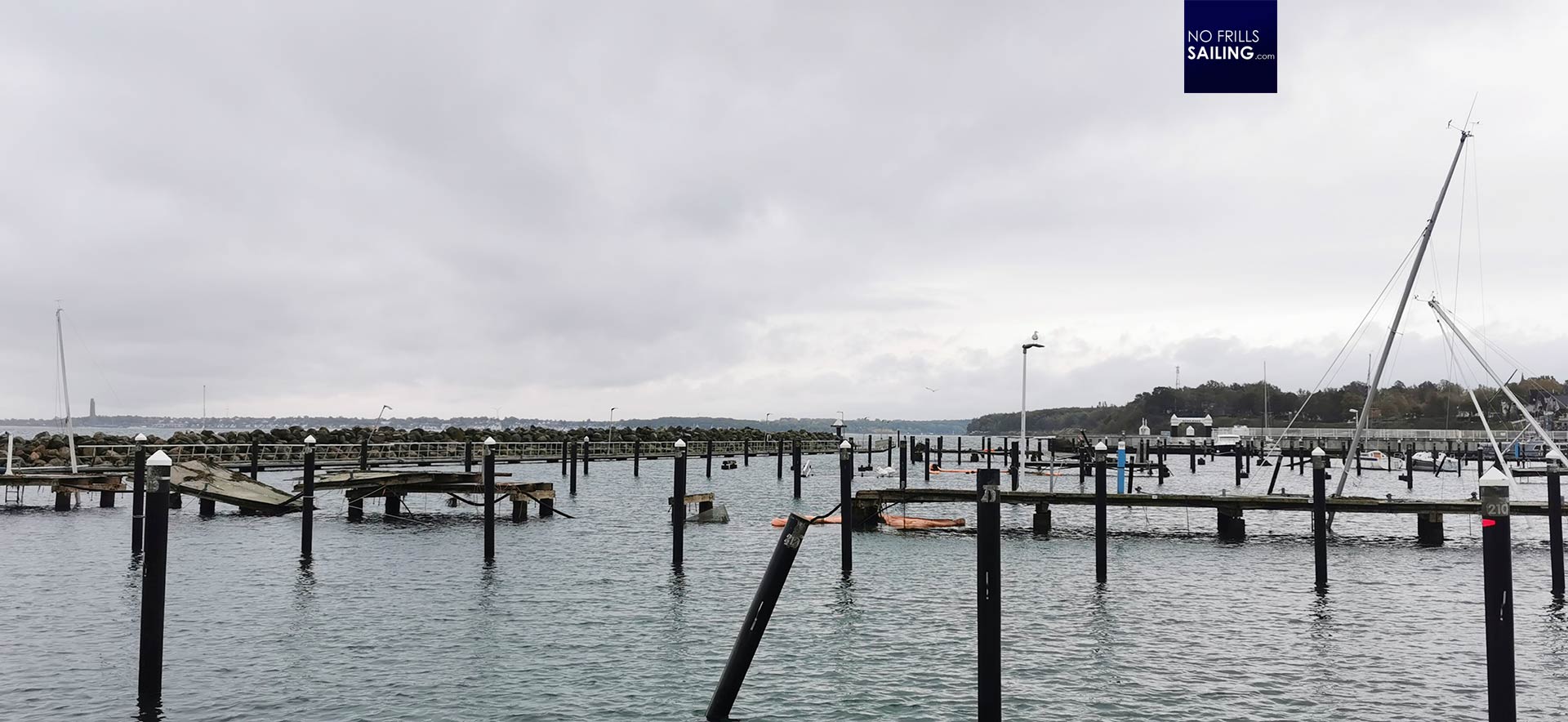
The harbor looks awful. Many pontoons destroyed, huge holes gaping in the long jetties. Most of the berths are empty, latest after the storm all of the boats which had not been destroyed, incapacitated of had been lucky to sustain only light damage have left the marina already. Upon closer inspection, a lot of masts stick out of the water, pointing to the skies in awkward angles: Those are the sunken ships of Schilksee.
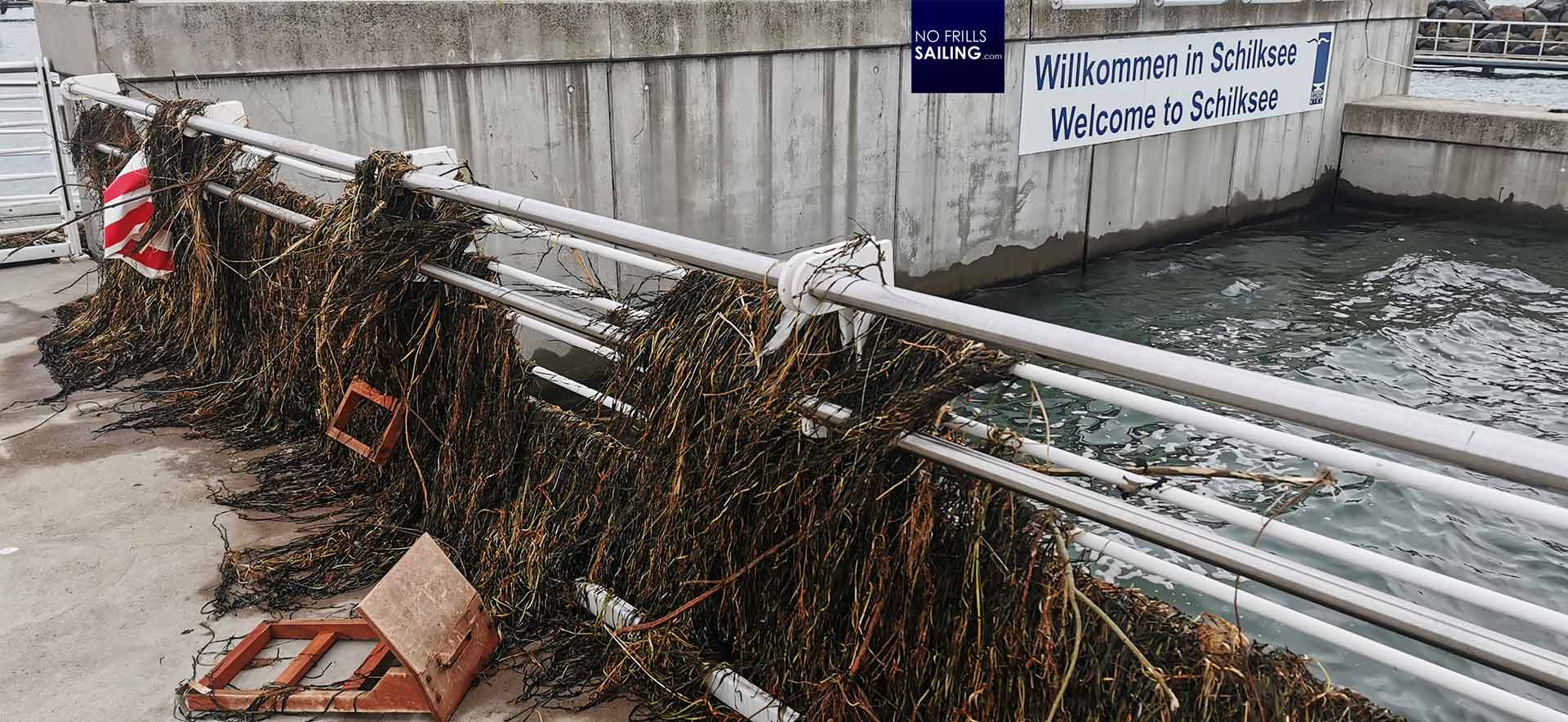
It´s a heartbreaking scene. I near myself slowly, try to grasp the whole situation. It kind of feels like picking over bones: As I am stranger to this place, don´t have a boat here nor have any connection, I try to keep myself to the background: I see many people in boiler suits, grim looks on their faces. Probably owners trying to salvage what has been left over by the storm. Schilksee had been hit hard. Huge chunks of seagrass left over 2 or 3 meters above normal are an indicator of how much more water had been piled up by the storm, making it possible for the destructive waves to easily run over the breakwater.
How could this happen?
Sever storms and floodings like this are extremely rare events in the Baltic Sea. As the prevailing wind direction is a Westerly, normally harbors like Schilksee are very much protected. But this time a unique situation unfolded destructive events: A high pressure system over Sweden and a low pressure system in Belgium/France worked together to create a funnel of extremely strong winds directly over the Baltic Sea. This was an easterly wind, storm force.
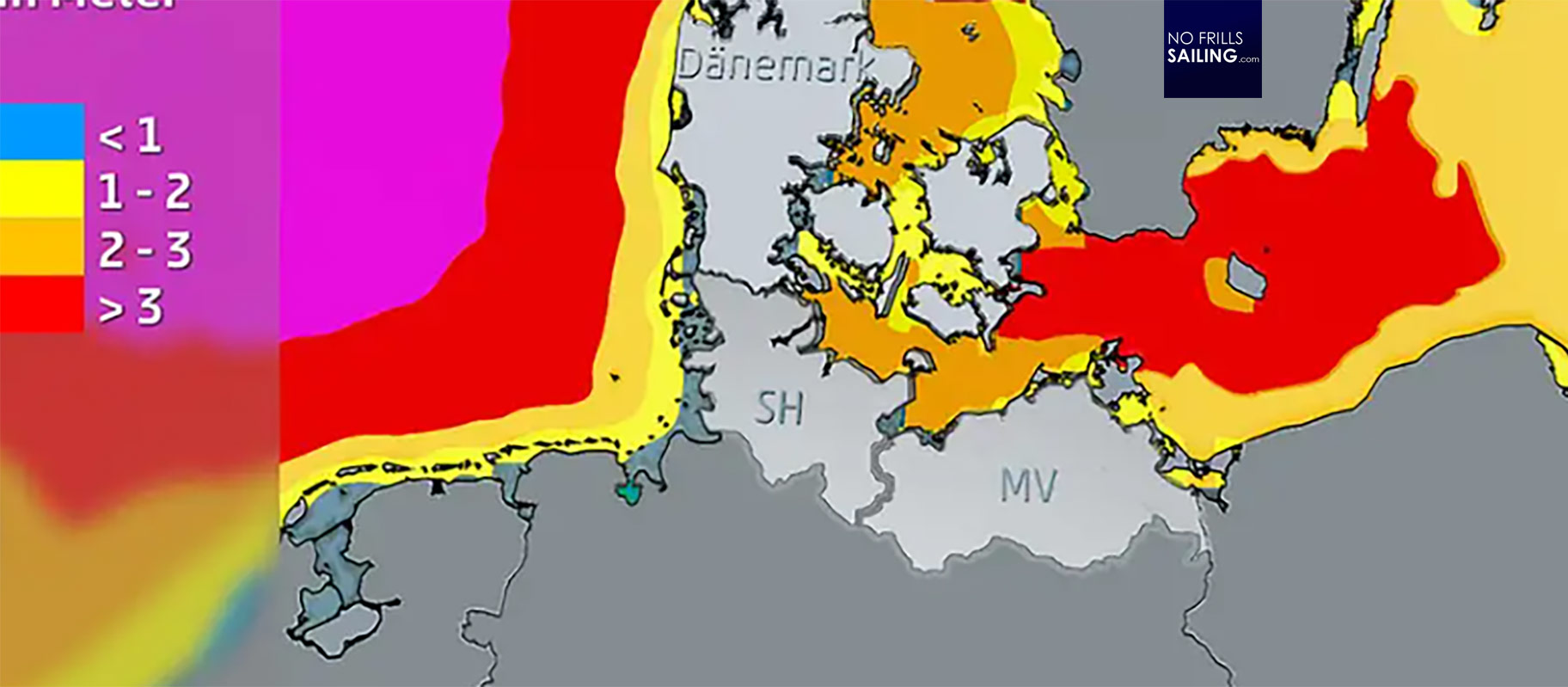
The Easterly reached sustained wind speeds of over 40 knots, which is unusual for the Baltic Sea. I can´t remember having had myself being suspect to 40 knots in the Baltic, maybe one or two times since I sail. 40 knots of sustained wind speeds means that in peaks much more had been achieved. Friends of mine tell me that they had measured gusts with 60 knots on their boats, which is crazy!
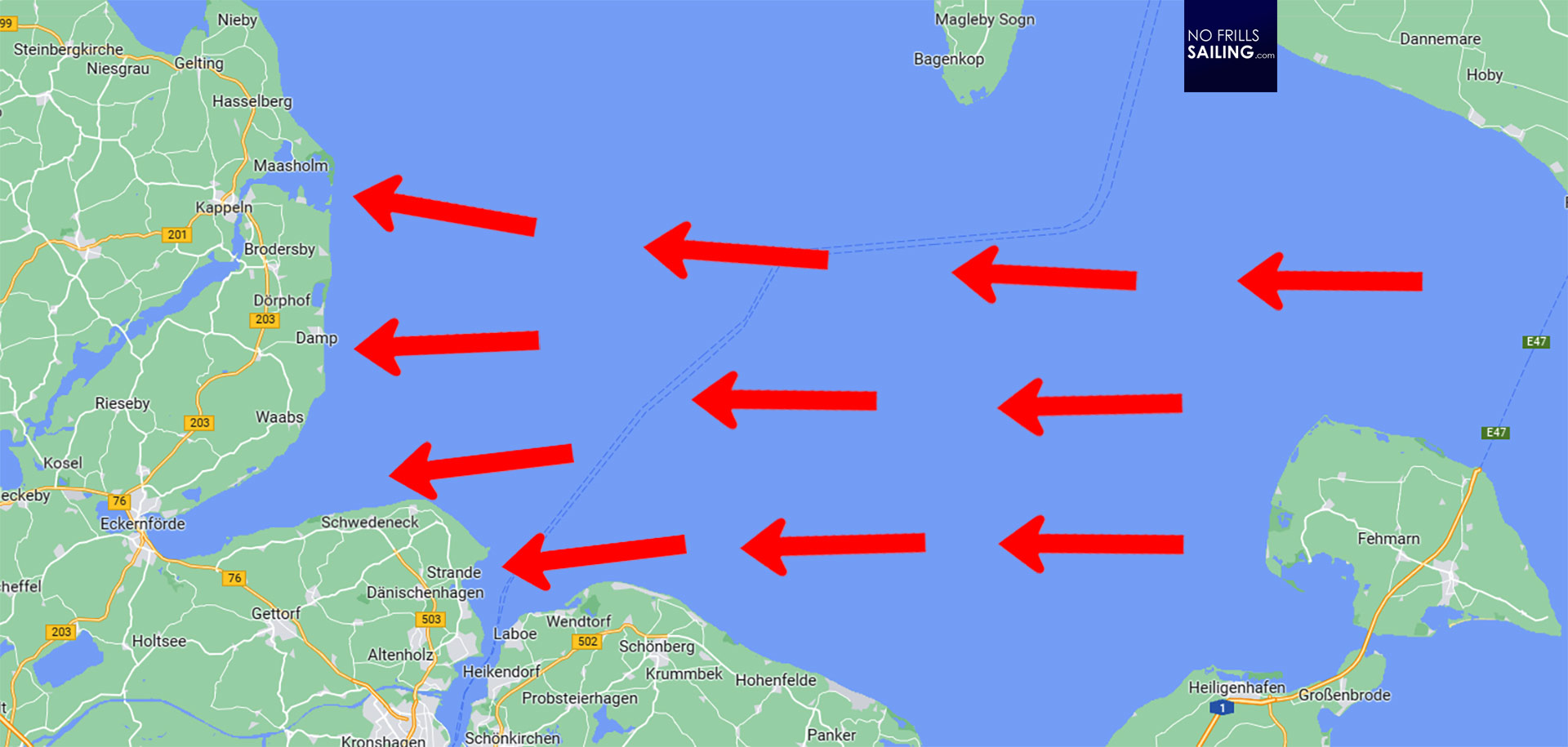
Now, looking at the geography of the Baltic, which in the southern part is a sea stretching from East to West only to make a bend and turn into a North-South-oriented sea, it becomes clear why this storm turned out to be so violent and destructive: As for the Western shores of Germany (and more to the East, Denmark and Sweden as well) this is an up to 60 mile long unobstructed fetch. The wind was not only able to create huge and violent waves but also literally pile up the water of the Baltic basin in the Western part. Hence, a storm flood with 2 to 3 meters above normal plus violent breaking waves. For a marina like Schilksee (and many more along the coast) which is totally open and unprotected to the East, the catastrophe was a sure matter. Seeing this with my own eyes standing at this location makes this very clear.
Many boats still in the water
I roam the pontoons after acquiring a special permission, wearing a reflective vest and a life jacket, I stand in awe. Boats sunken still hanging in their land lines. Masts sticking out of the water. Blurred ghostly wrecks 3 or 4 meters below waterline. I can see the Teak benches, sprayhoods ripped apart and butchered sails. It´s a heartbreaking scene for any sailor, a strange silence hovers over this place. I feel like strolling a graveyard. It is said that more than 200 yachts have been so severely damaged that they are total write-offs. More than 50 boats sunk.

It is late October, the storm has hit in the middle of the crane-season. Many owners (I know) still had their boats in the water, enjoying these last weeks of mild temperatures before the winter, postponing their winter storage appointments after a very disappointing, rainy and cold summer 2023. Tragically, this mild autumn made so many boats perish. On the other hand, I ask myself all the time why so many skippers did not manage to rescue their boats. There was time to react, this storm was announced and although the severity was much higher in the end, the weather forecast warned of a powerful storm flood. As my own company had three boats in a marina nearby (where also many boats had been destroyed with some sunk!) I remember myself being frantically on the phone before the storm hit to activate all our skippers we´ve had to bring the boats to safety. We sailed the yachts to their refuge in Luebeck, more inshore, where flooding occurred as well (up to 2 meters above normal) but no violent gusts and no destructive waves could reach the yachts.
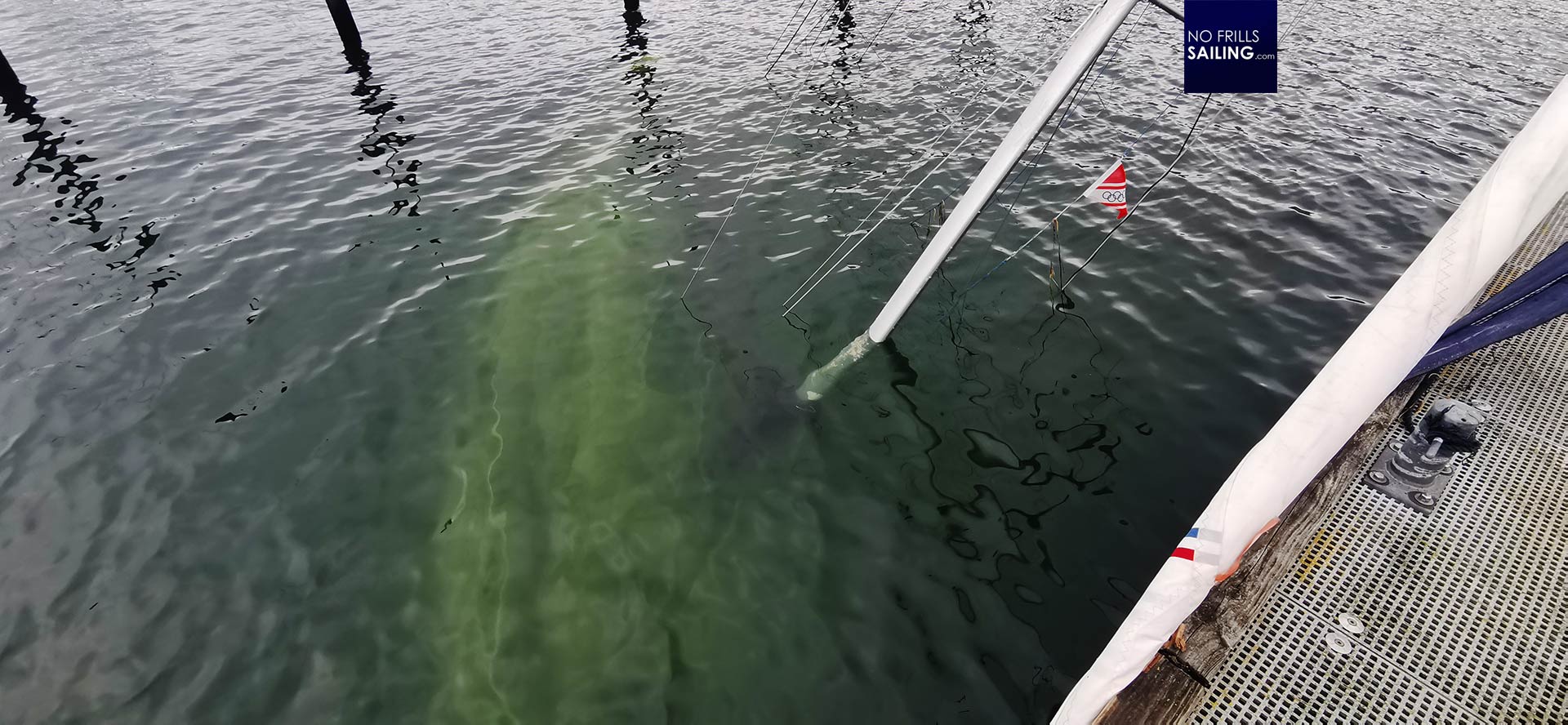
The thing with Schilksee is that just vis-à-vis, no 2 miles away, another big marina is situated where virtually nothing bad happened. Also, some 5 miles down south the entrance to the Kiel Canal would have been a save harbor. In the end, I guess, many circumstances added up, like the autumn school break with many families being away on vacation, false sense of security, underestimating the storm, maybe negligence as well. But of course, there are also so many stories of skippers desperately fighting for their boats during the high of the storm, harbormasters securing lines and desperately trying save what is lost already in danger of their own lives … nobody could have foreseen what had unfolded that fateful night one week ago, I am sure.
Huge damage to harbor infrastructure
There are colorful discussions going on right now in the news boards, forums and yacht-magazines. Everybody has his own perspective and view on that topic. We are rarely hit by such severe weather, unlike people living in the Caribbean for example or even my dear French friends right there on the Atlantic shores – I am sure we all have learned a lot and will draw our own, personal conclusions as boat owners and skippers. Another aspect apart from all those sunken boats is the harbor infrastructure.
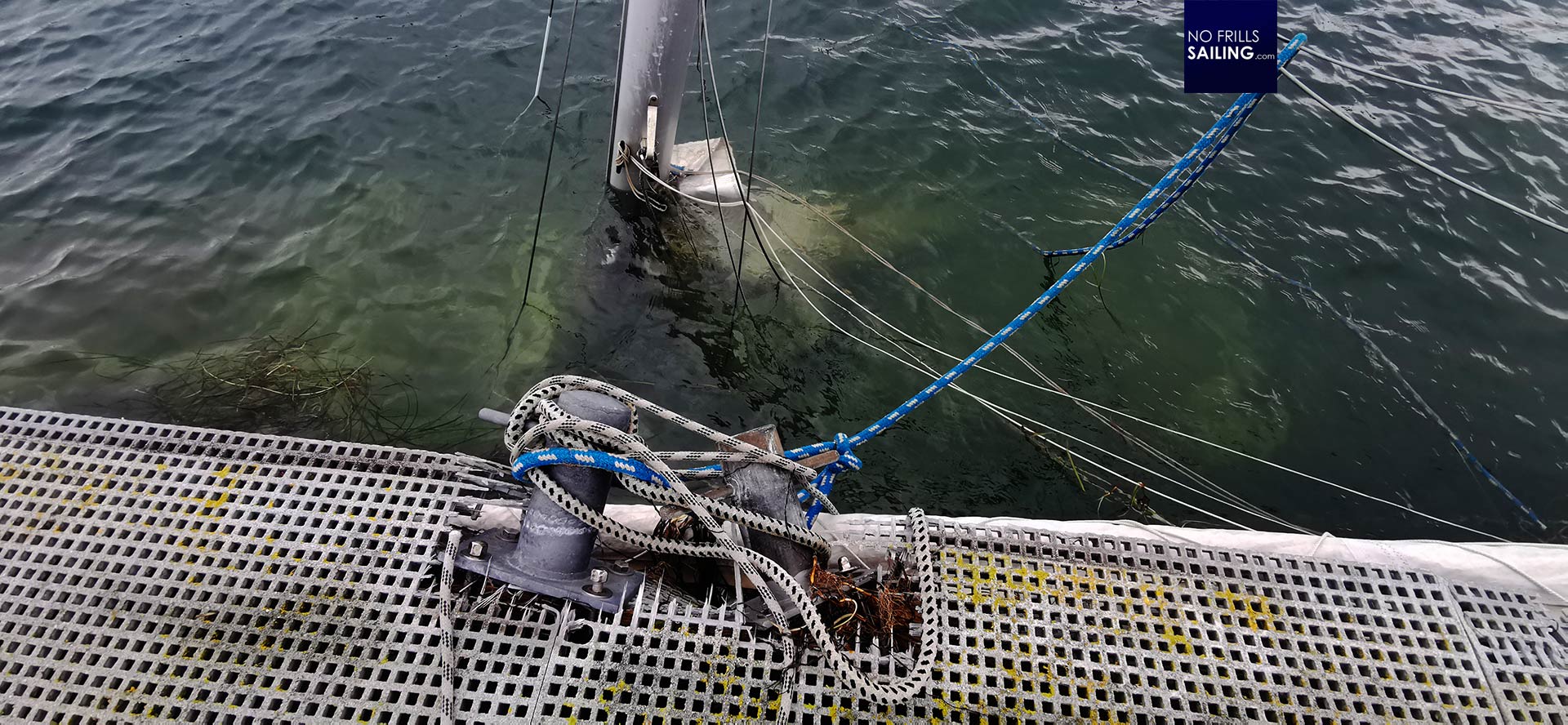
I was shocked to see bollards literally ripped off and out from the frames of the pontoons. Imagine the sheer power and destructiveness of the wind and the waves, making such things happen! Even though I always notice wrongly tied up boats on the pontoons literally every time I walk a harbor, even if you have done a proper cleat hitch, seeing the bollard torn off from the pontoon is shocking.
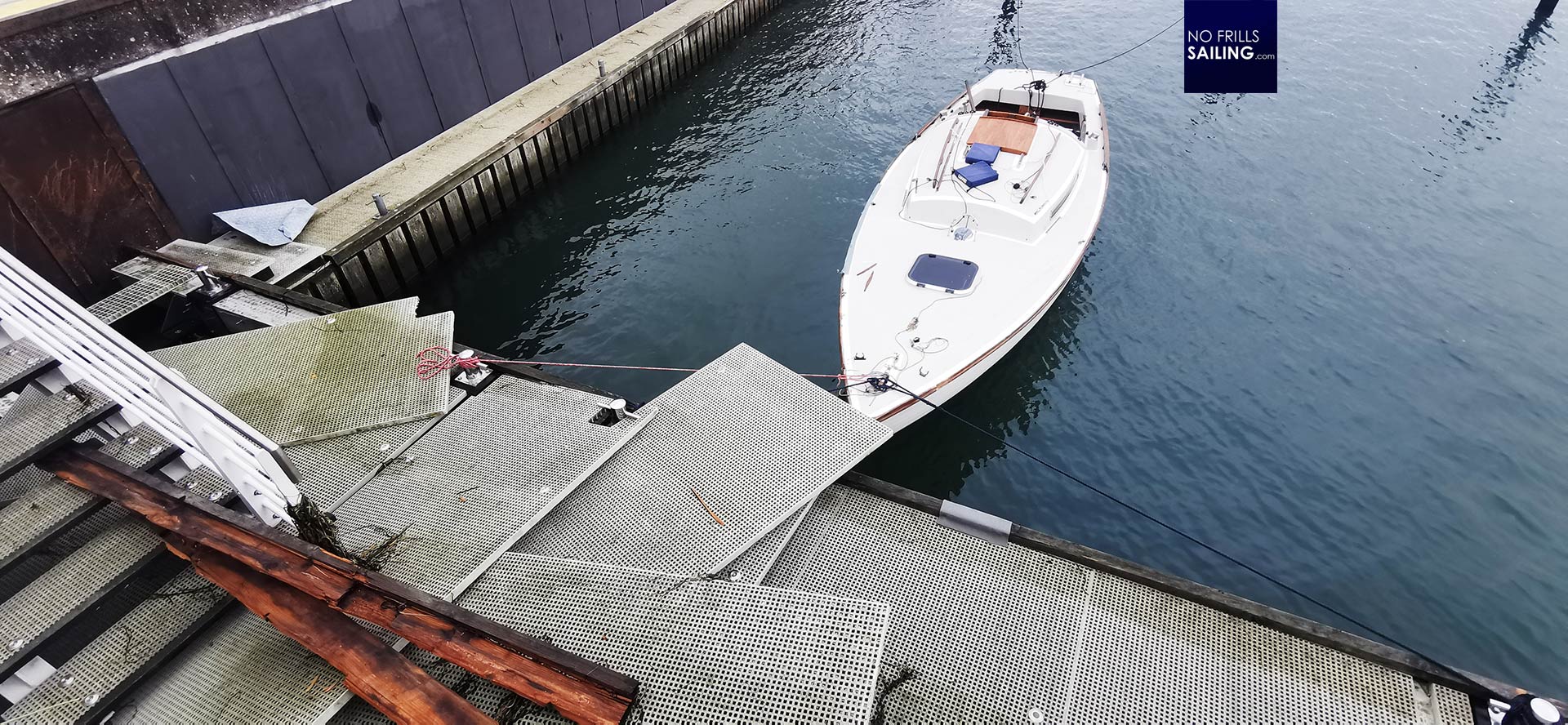
In one corner of the harbor, I guess it was the most leeward corner, a pile of pontoon-gratings stacked upon each other has been washed ashore. I don´t know how much weight one single grating may have, but I can imagine how massive the force of such a drifting grating may be when it is hitting a plastic hull, ripping open decks or bows. Aren´t those gratings securely screwed to the frame? How great of a force can turn them loose?
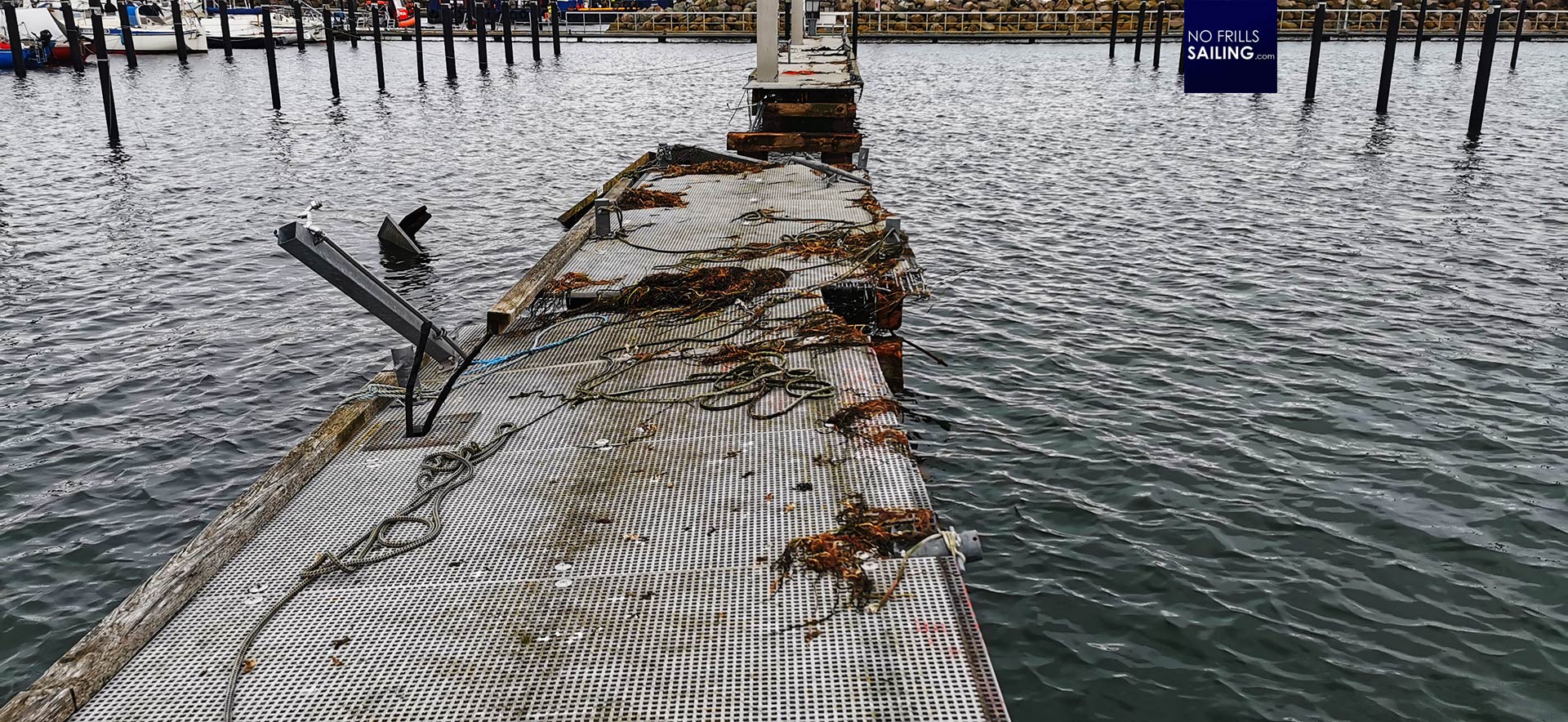
The destruction is everywhere: Even the stone walls of the basin have been washed away, the big-ass diameter foundation pillars of the pontoons are bent. It´s crazy. I am sure that the whole shore power electric system is heavily damaged if not completely destroyed. As we do not berth our boats in Northern Europe “Roman-Catholic”, meaning stern first on mooring lines, also, each and every bollard may have to be checked, not a few surely have to be replaced. That´s a whole lot of work – any many millions of Euros of budget needed.
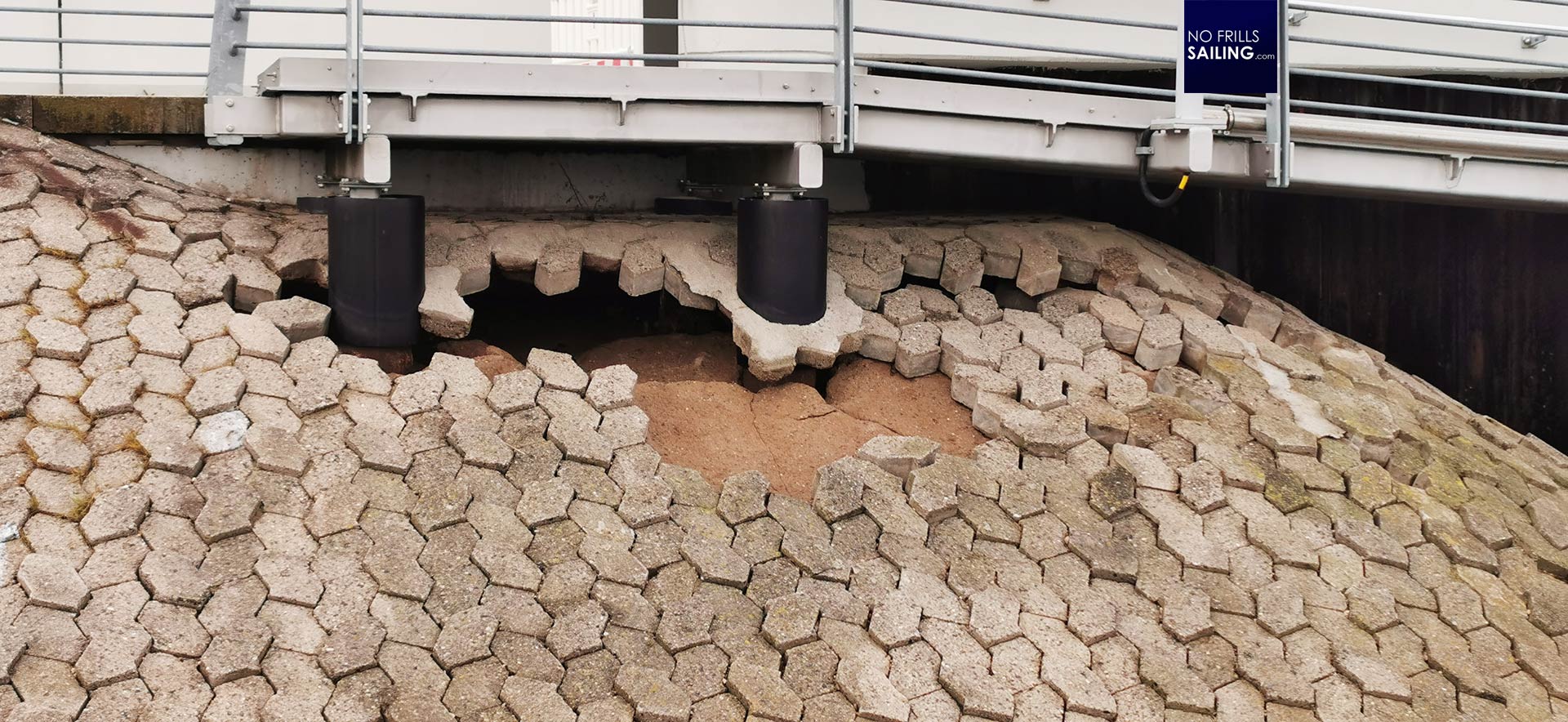
In times of recession and inflation and thus our precious hobby becoming increasingly expensive, this could and surely will lead to further increasing prices. Not to mention the time needed to rebuild. It´s not just the marinas and boating infrastructure that had been damaged, the whole coastline suffered severely. Beaches washed away, vacation homes near the shore destroyed or damaged, hotels and promenades. It kind of feels like we´ve had our own taste of Katrina in the Baltic …
Will my insurance compensate?
Back from my depressing harbor round I meet Ole Pietschke. Germany´s (if not Europe´s) biggest yacht insurance company Pantaenius has set up a container bureau right at the site. A huge banner says “Claims Settlement” and is meant to shorten bureaucratic ways, damage survey and insurance claims. The container is manned since day one after the storm. No weekend, daily shifts of 10 to 12 hours. The team of Pantaenius does not just do the paperworks – it´s hands-on work as well.
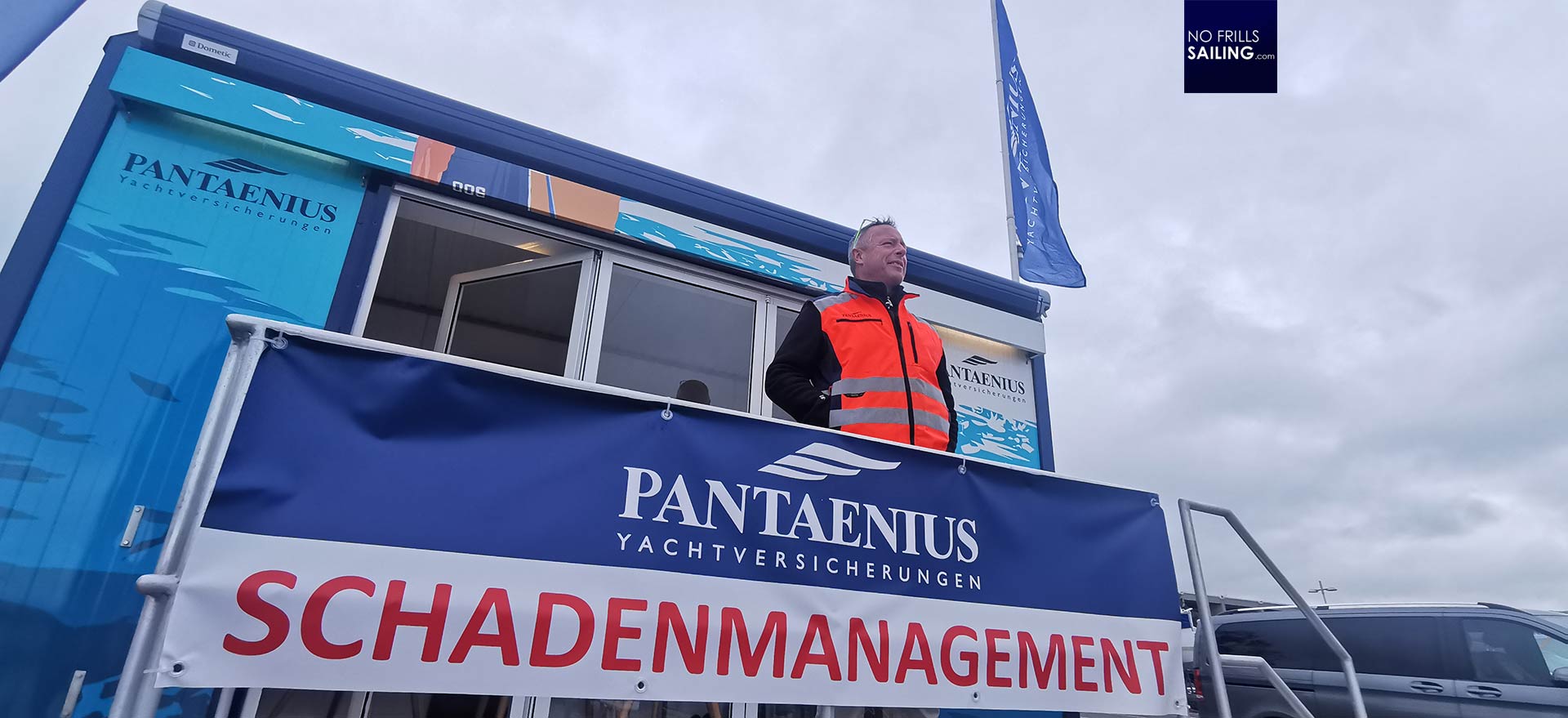
The coordinate the salvage operation going on, a ship with a 30-ton crane is working three shifts to salvage the wrecks. I know these guys well, especially Ole, who is always smiling, joking around and in a good mood. Meeting him now is different: Deep worry lines on his forehead, a kind of staring into the distance. I can imagine the tragedy he has to deal with: Boats are not just things. They are family members. We are talking a while about the efforts undertaken by the insurance company to get things done. And indeed, if insured, chances are high that they will be paying, that´s a good news at least.
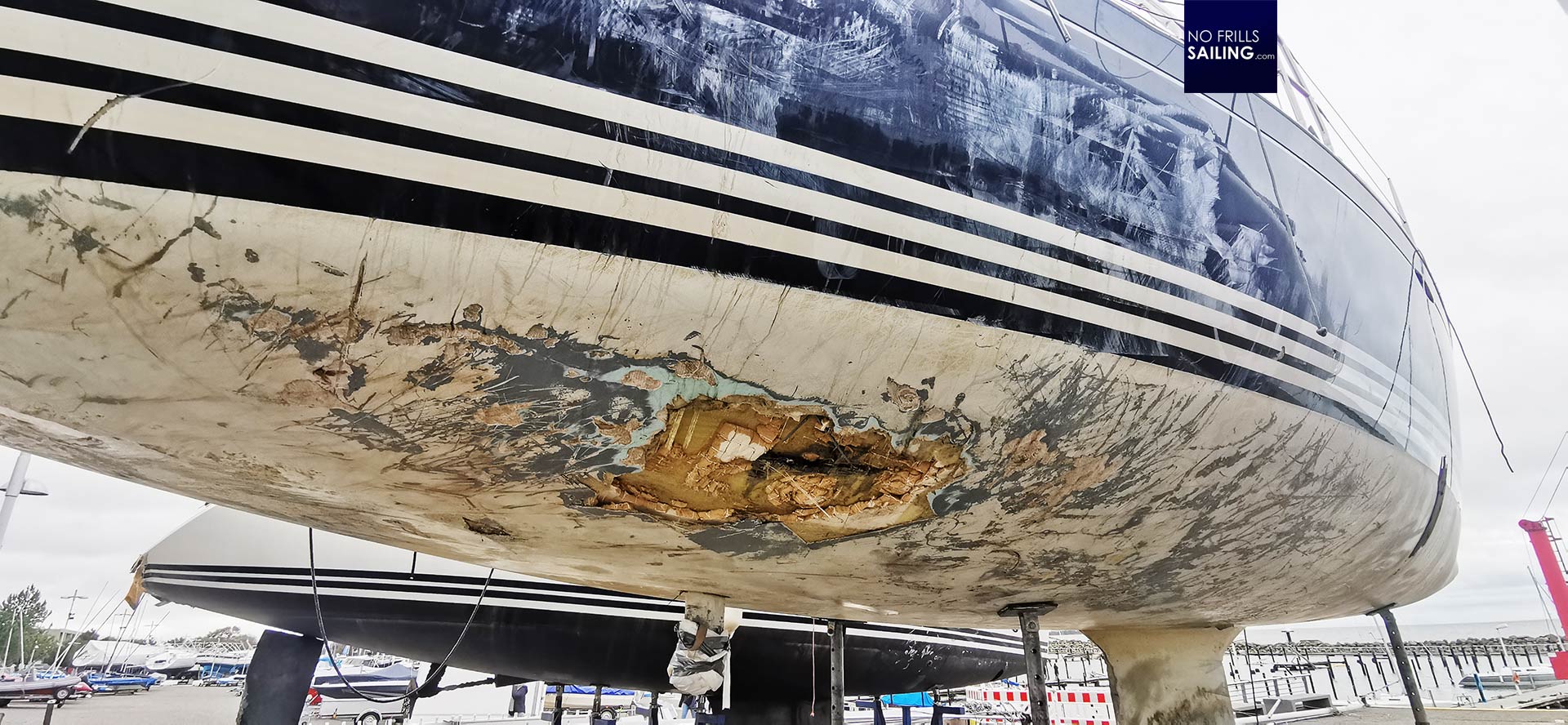
He points towards an area, makeshift sealed off from the rest of the harbor, where the salvaged and sunken boats are temporarily stored. Permission granted, I walk over to take a look. My mood becomes even more somber. I see an X-Yacht with large holes in her hull. Scratchmarks all over the ship´s body, holes torn open, revealing the sandwich core and GRP-layup. Cast iron keel fins with huge chunks broken off, crushed rudder fins, awkwardly unscrewed saildrives. Still dripping, partially filled with the dark mud of the harbor´s seabed. I´m shivering imagining that this could also be my own boat …
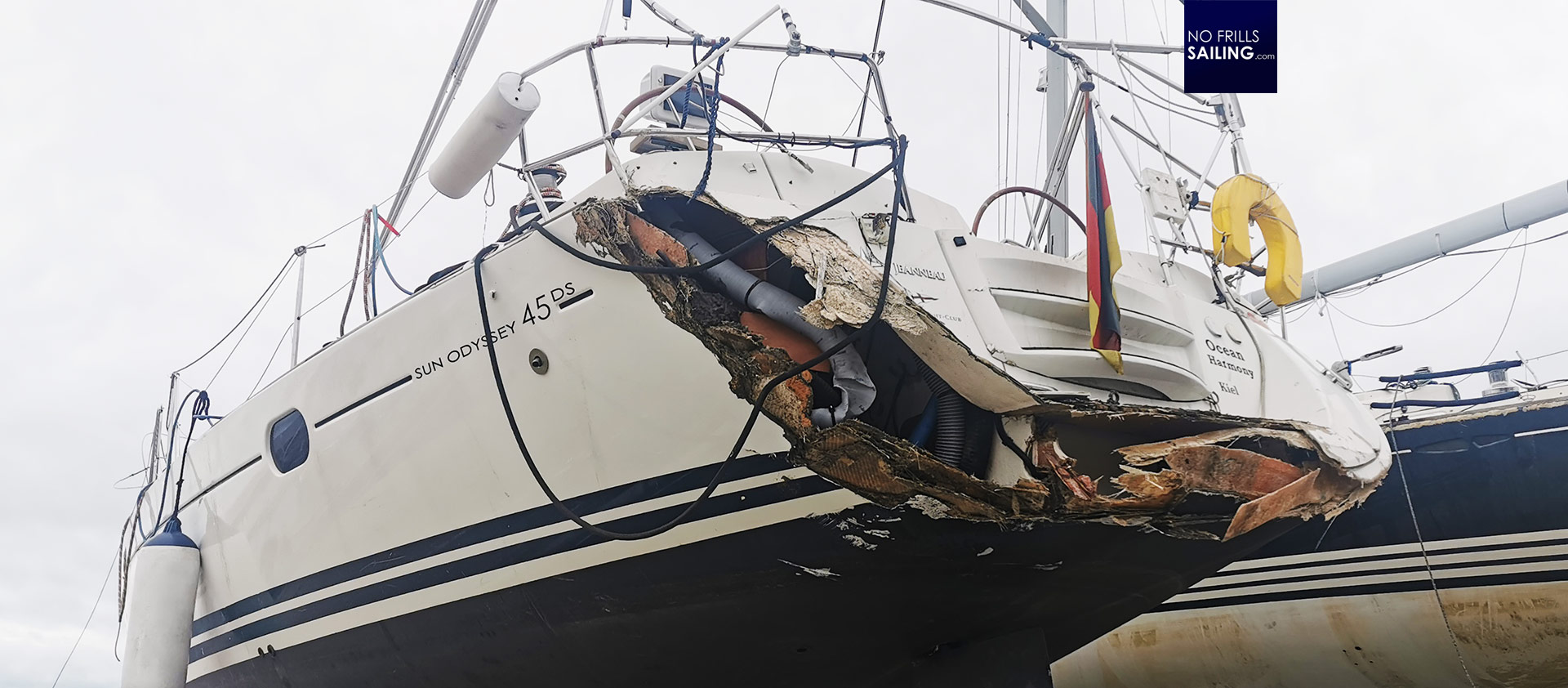
I meet some owners working in their former boats now turned to wreckage. A +70 years old man, blue biler suit, steps down a ladder. His small Hallberg-Rassy with a totally wrecked stern section. On the ground, his dog awaits him. We nod to each other, I try to smile confidently, but the mood is dark. Like being on a funeral. The man carries two carryout bags from a supermarket, having tried to salvage whatever is not destroyed. I guess, mainly personal things since electronics should be destroyed. I think by myself, even if the insurer pays for the current market value of his boat, many like him won´t spend their well-deserved sunset years on a boat. Another heartbreaking aspect of this tragedy.
Still so much work to do
After some two hours of walking around and trying to grasp the situation, I feel like I have seen enough. It´s a scene of utter destruction, a scenery of broken boats and pontoons. I watch the salvage crane doing its work – there´s a large sloop with a 4-spreaders-rigg sunk right at the entrance to the harbor. Although the Kiel port authority has ordered that all wrecks are to be raised until next Tuesday (which is 3 days left), I don´t think that this is manageable: Still too many masts sticking out of the water.
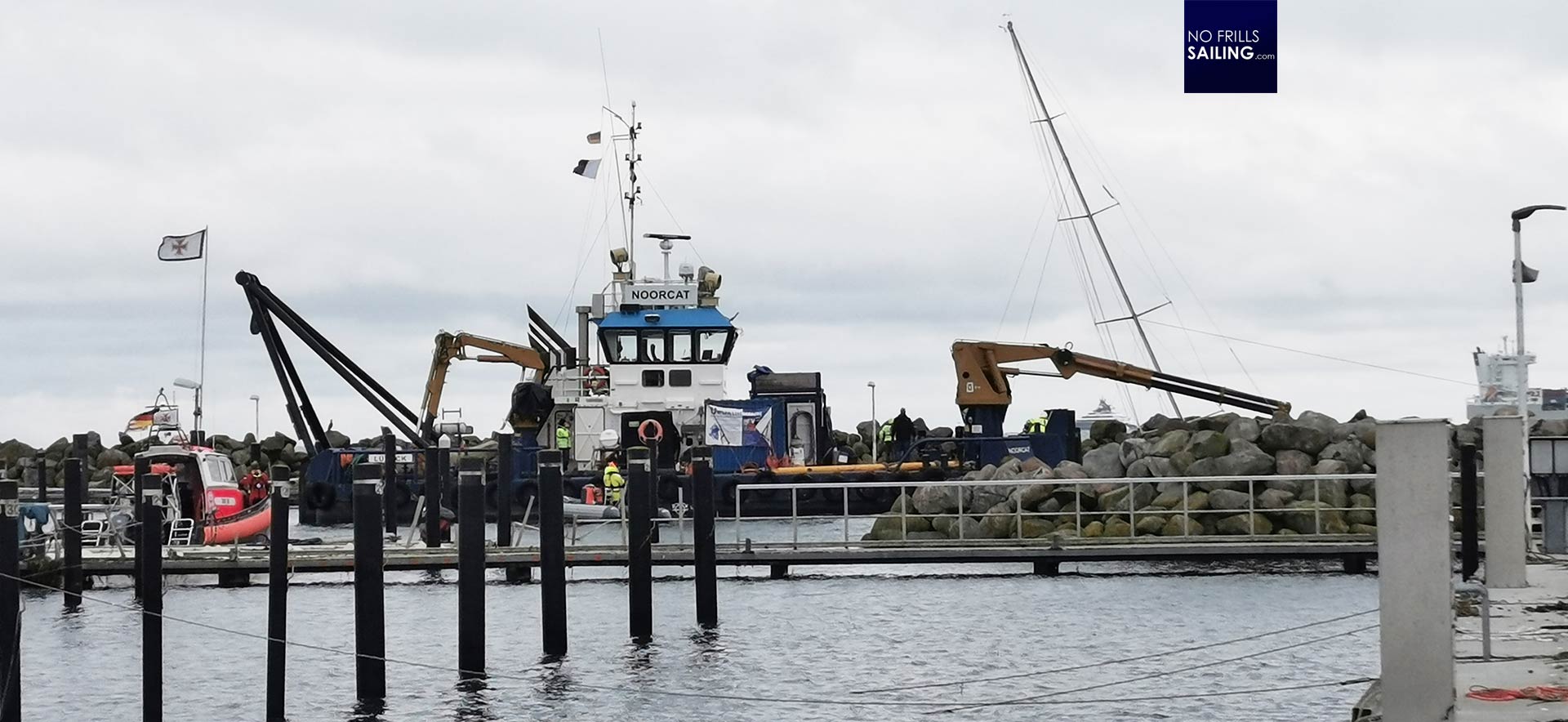
And there´s another severe weather warning in the pipeline: Writing this article on Sunday (one week after the storm), forecasts are again announcing strong winds, thunderstorms and gusts of up to 45 knots. I am surely not among those climate change-prophets who are making noise with constant alarmism, but I am an advocate of seamanship and level-headedness.
What can be learned?
I think there is no definitive learning as everybody may have his own perspective and view on this topic. I am “happy”, if I can say it that way, that my initial thoughts and reactions before the storm turned out to be the right ones: Even though I am boat-less right now, my first reaction was to do everything to bring our boats inland to a secure place. Although my home marina had not been hit as hard as Schilksee, I would surely have sailed away my boat to a secure inshore location.
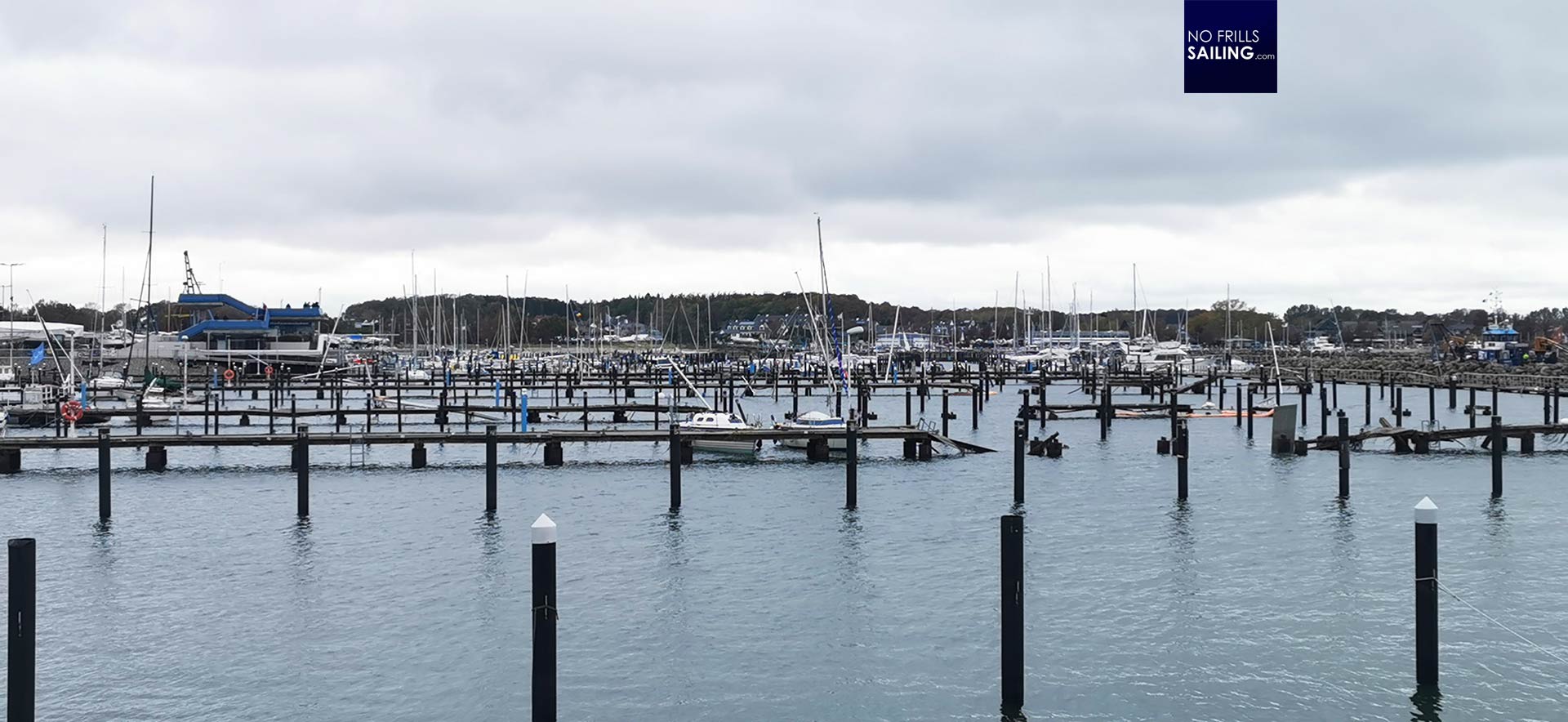
Also, constant watch of weather even when not present at the boat or sailing, is a must for any skipper, I guess this is the number one learning for us all. As the sun is our today, I just went to my new home port, a small marina halfway from the Luebeck Bay to Luebeck. This small 2-pontoon location had been flooded as well, marks were clearly visible, but no damage. Speaking to some owners apparent, they assured me that everything had been safe even during the storm. That´s at least a bit reassuring. But no matter how you look at it, in the end the one big conclusion is always the same: Mother nature is all-powerful, checkless und uncontrollable. Humbleness is something I´d say we sailors get taught pretty early.
You might as well find interesting to read:
Weather routing with free software
My first storm sailing experience
The mighty Bora!
